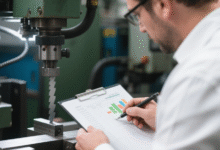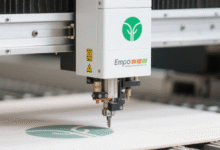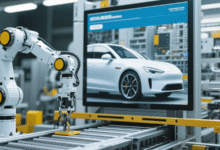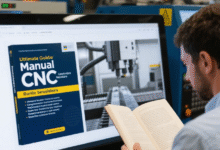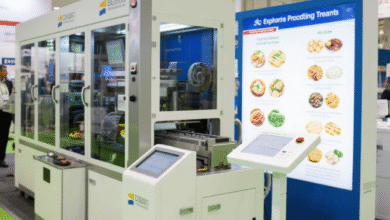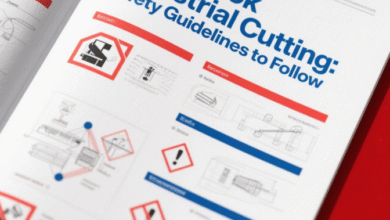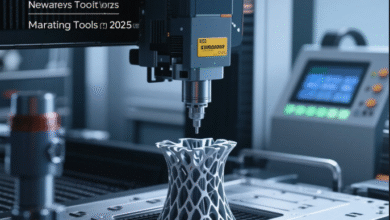Innovations in Industrial Metal Cutting
Advertisement
Introduction
Metal cutting is an essential process in various industries, such as automotive, aerospace, and manufacturing. Over the years, advancements in technology have led to significant innovations in industrial metal cutting. These innovations have revolutionized the way metal is cut, leading to increased efficiency, precision, and cost-effectiveness.
In this article, we will explore the latest innovations in industrial metal cutting, their strengths, weaknesses, and how they are shaping the future of metal cutting processes. Additionally, we will provide a comprehensive overview of the different technologies and techniques that are driving these advancements.
As the demand for high-quality and complex metal parts continues to grow, it is crucial for manufacturers to stay abreast of the latest innovations in metal cutting. By implementing cutting-edge technologies, businesses can improve their productivity, reduce waste, and enhance the overall quality of their products.
Let’s delve into the world of innovations in industrial metal cutting and discover how these advancements are revolutionizing the manufacturing industry.
Strengths of Innovations in Industrial Metal Cutting
One of the key strengths of innovations in industrial metal cutting is the improved precision and accuracy that they offer. Advanced cutting technologies, such as laser cutting and waterjet cutting, allow for intricate cuts with minimal margin of error.
Another strength of these innovations is the increased efficiency and productivity they bring to the manufacturing process. Automated cutting machines equipped with advanced software can perform complex cutting tasks at a much faster rate than traditional methods.
Furthermore, innovations in industrial metal cutting have led to cost savings for manufacturers. By reducing material waste and optimizing cutting processes, businesses can cut down on expenses and improve their bottom line.
Additionally, these innovations have enabled manufacturers to work with a wider range of materials, including exotic metals and alloys, that were previously difficult to cut using traditional methods. This versatility opens up new opportunities for product design and development.
The advancements in industrial metal cutting also contribute to environmental sustainability by reducing the consumption of energy and resources. Modern cutting technologies are designed to be more energy-efficient and produce less waste, making them more environmentally friendly.
Moreover, innovations in metal cutting have improved safety in the workplace by reducing the risks associated with manual cutting processes. Automated cutting machines are equipped with safety features that minimize the chances of accidents and injuries.
Lastly, innovations in industrial metal cutting have enhanced the overall quality of metal parts by ensuring uniformity and consistency in the cutting process. This results in higher precision and better performance of the final products.
Weaknesses of Innovations in Industrial Metal Cutting
Despite their numerous strengths, innovations in industrial metal cutting also have certain weaknesses that need to be addressed. One of the primary challenges is the initial investment required to adopt new cutting technologies.
Many businesses may hesitate to invest in expensive cutting machines and equipment, especially if they are already using traditional methods that are proven to be effective. The high cost of acquisition and maintenance can be a barrier for smaller companies with limited budgets.
Moreover, the complexity of some cutting technologies may pose a challenge for operators who are not familiar with the new systems. Training and skill development are essential to ensure that employees can effectively operate and maintain advanced cutting machines.
Another weakness of innovations in industrial metal cutting is the potential for technical issues and downtime. Complex cutting machines are more prone to malfunctions and breakdowns, which can disrupt the production process and result in delays and additional costs.
Furthermore, the rapid pace of technological advancements means that cutting machines may become obsolete sooner than expected. Businesses need to stay updated with the latest innovations to remain competitive and avoid investing in outdated equipment.
Additionally, some cutting technologies may have limitations in terms of the thickness and type of materials they can cut. While advancements have expanded the range of materials that can be processed, certain exotic metals and alloys may still pose challenges for some cutting methods.
The environmental impact of industrial metal cutting is another concern, as some cutting technologies may generate harmful emissions or waste. Businesses need to consider the environmental footprint of their cutting processes and implement sustainable practices to reduce their impact.
Lastly, the reliance on automated cutting machines can lead to a loss of jobs for manual laborers who were previously involved in the cutting process. While automation improves efficiency and productivity, it may also result in unemployment and require businesses to reevaluate their workforce.
Table of Innovations in Industrial Metal Cutting
| Technology | Advantages | Disadvantages |
|---|---|---|
| Laser Cutting | High precision, speed | High initial cost |
| Waterjet Cutting | No heat-affected zone, versatility | Slower than other methods |
| Plasma Cutting | Fast cutting speed | Less precise than laser cutting |
| Wire EDM | Accurate cutting of complex shapes | Slow process |
Frequently Asked Questions
1. What are the latest innovations in industrial metal cutting?
Answer: The latest innovations include laser cutting, waterjet cutting, and advanced software-controlled cutting machines.
2. How do these innovations improve the metal cutting process?
Answer: These innovations offer higher precision, increased efficiency, and cost savings for manufacturers.
3. What are the challenges of adopting new cutting technologies?
Answer: The challenges include high initial investment, technical complexity, and potential downtime.
4. Are there limitations to the materials that can be cut using advanced technologies?
Answer: While advancements have expanded the range of materials, some exotic metals and alloys may still pose challenges.
5. How can businesses ensure the safety of employees when using cutting machines?
Answer: Businesses should provide proper training, implement safety protocols, and use machines with built-in safety features.
6. What are the environmental considerations of industrial metal cutting?
Answer: Some cutting technologies may generate harmful emissions or waste, requiring businesses to implement sustainable practices.
7. How can businesses stay competitive in the metal cutting industry?
Answer: By staying updated with the latest innovations, investing in training, and implementing efficient cutting processes, businesses can maintain a competitive edge.
Conclusion
Innovations in industrial metal cutting have transformed the manufacturing industry by improving precision, efficiency, and the quality of metal parts. While these advancements offer numerous benefits, businesses need to address the challenges associated with adopting new technologies to fully leverage their potential.
By investing in training, staying updated with the latest innovations, and implementing sustainable practices, manufacturers can enhance their metal cutting processes and stay competitive in a rapidly evolving market. It is crucial for businesses to embrace change and innovation to drive growth and success in the industrial metal cutting sector.
Take the leap into the future of metal cutting with cutting-edge technologies and techniques that will revolutionize your manufacturing processes and elevate the quality of your products. Embrace the power of innovation in industrial metal cutting and unlock new possibilities for your business.
Join the ranks of industry leaders who are pioneering the way forward in metal cutting innovation and shaping the future of manufacturing. Innovate, adapt, and thrive in a competitive market by harnessing the power of advanced cutting technologies and techniques.
The time is now to embrace innovations in industrial metal cutting and position your business for success in a rapidly changing industry. Stay ahead of the curve, drive efficiency, and achieve excellence in metal cutting with the latest technological advancements at your fingertips.
Unlock the potential of your manufacturing processes and elevate your products to new heights with innovations in industrial metal cutting. Embrace change, drive growth, and lead the way in metal cutting innovation to secure a brighter future for your business.
Disclaimer
All content provided in this article is for informational purposes only. The information contained herein is based on research and industry trends and should not be considered as professional advice. Readers are advised to consult with experts or professionals in the field of industrial metal cutting for specific guidance related to their individual circumstances.

